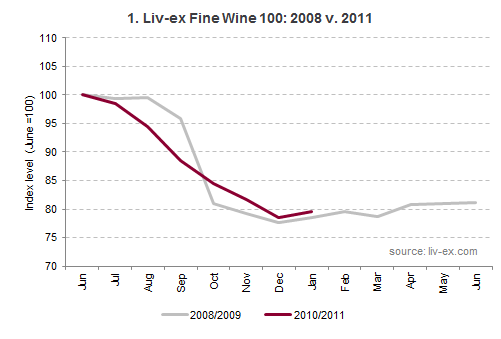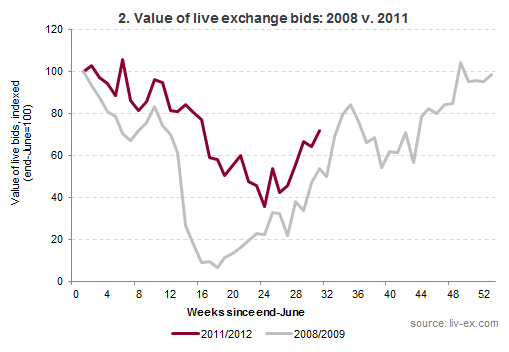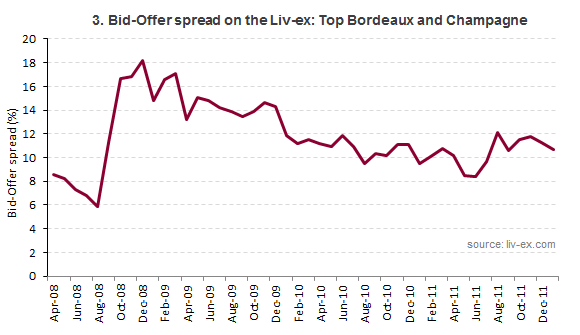When studying the current performance of the Liv-ex Fine Wine 100 Index, market watchers may wonder if we have a case of history repeating itself. As Chart 1 shows, the current correction has seen prices move downwards in a remarkably similar fashion to 2008 – with the Liv-ex 100 down 20.4 per cent by the end of January 2012, as opposed to 21.4 per cent by January 2009. A look at the value of live bids on the exchange over both periods (Chart 2) also throws up two lines that seem to follow a similar trajectory.
There are some small, but significant, differences between the two periods, however. As Chart 2 shows, bids all but disappeared in October 2008, something that did not happen in 2011. And as Chart 3 – which shows the average spread between the lowest offer (to sell) and the highest bid (to buy) for top Bordeaux on the Liv-ex exchange – highlights, mid-2008 was marked by ever-tightening spreads, to a low of six per cent, followed by a dramatic widening as the market fell. In 2011, the market’s behaviour was less extreme in both directions.
A measured response
So what does this tell us? Certainly, the dash for cash that followed the collapse of Lehman Brothers (and not just in fine wine) was notable by its absence in 2011. This time around, traders kept their nerves. While spreads did widen, we did not see the same signs of market dislocation on Liv-ex that were prevalent in the fourth quarter of 2008, when average spreads trebled. As then, signs of recovery are being matched by a rise in the value of bids on the exchange and a recovery in transaction volumes, which were up 23 per cent y-o-y in January.
In 2009, it was the weakness of sterling and the emergence of China as a wine-buying power that precipitated the bounce back. This time around, the source of lasting momentum is uncertain and the result may be a more measured recovery. This could be a good thing. The price rises we saw in the months leading up to the corrections of both 2008 and 2011 were clearly unsustainable.








